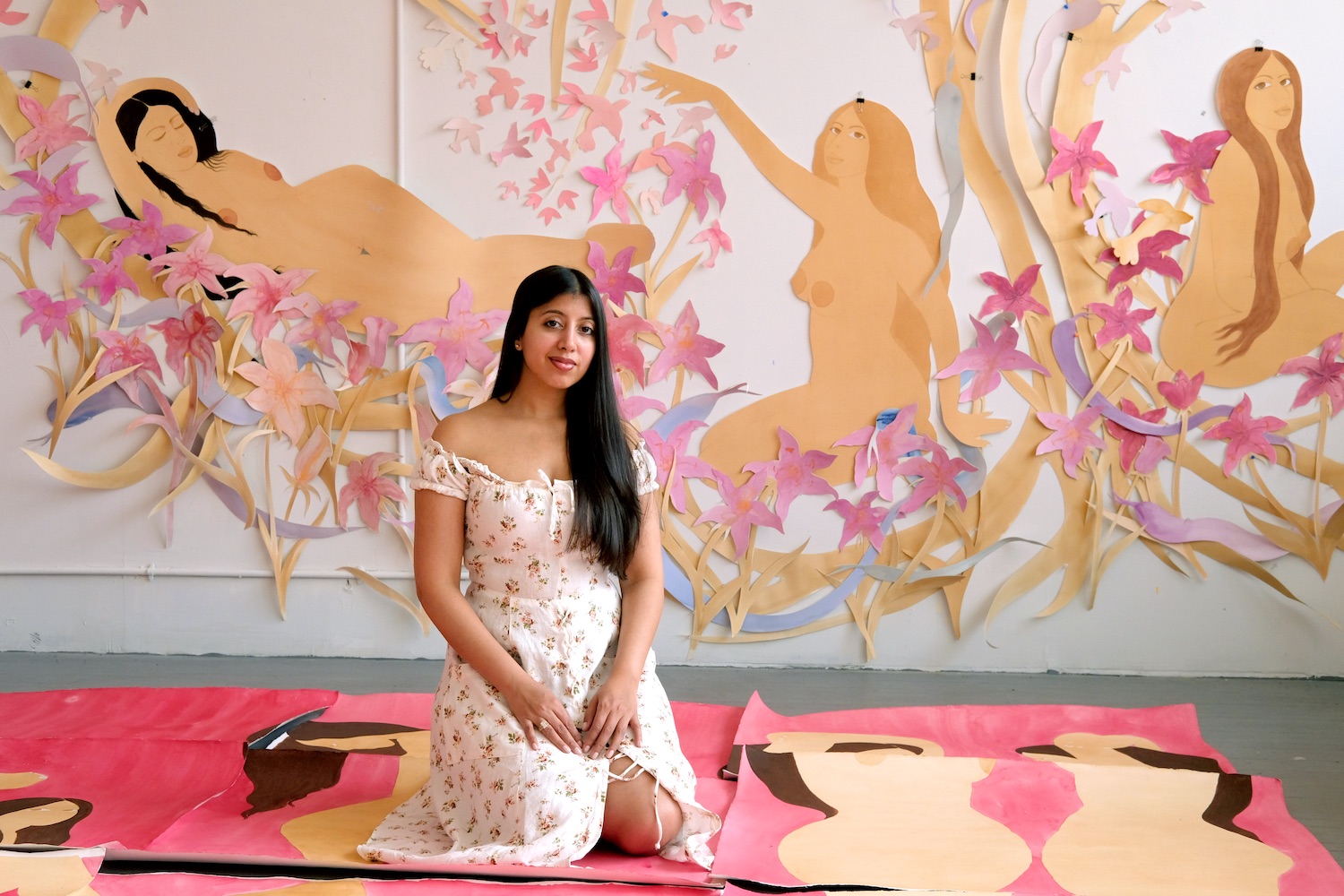When we spoke with Adam Silverman earlier this spring, he was in the process of moving his pottery studio. He likes to work alone, and so was luckily able to continue working under California’s stay-at-home order.
The Los Angeles–based artist was settling in, unpacking boxes, and bringing in a new, larger kiln that could live outside and help make his visions of a six-foot vessel come true. His pieces have grown over the past two decades from small bowls and soy sauce dishes to three- and four-foot pieces.
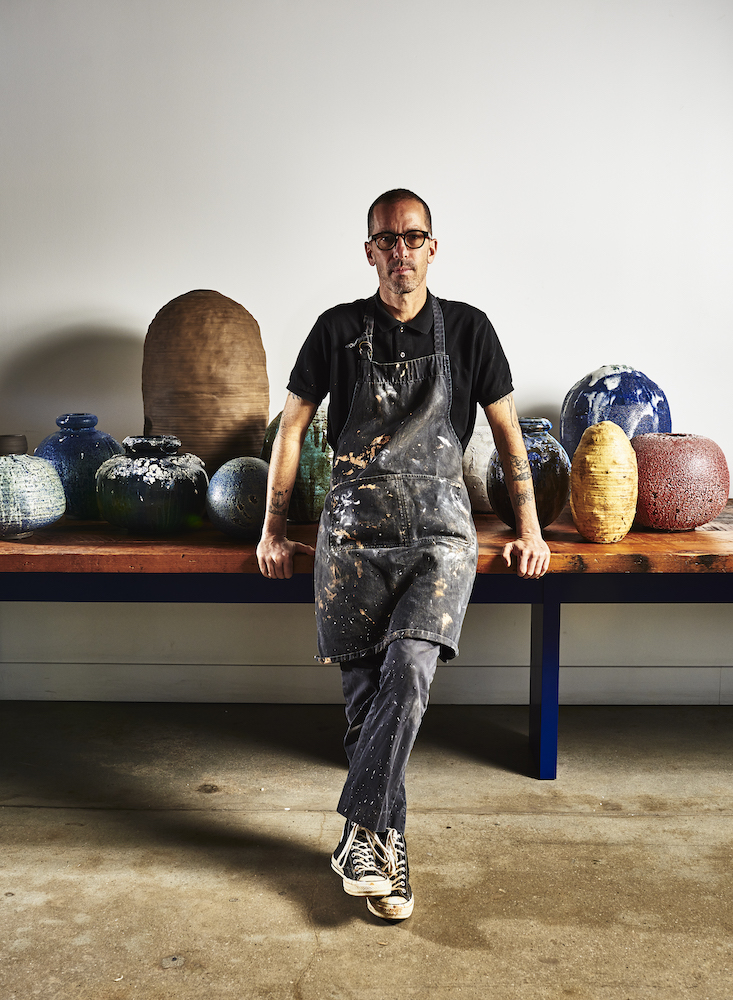
Adam Silverman, photo by Adrian Gaut.
Silverman began experimenting with local materials ten years ago, later incorporating wood ash from fallen trees and nearby clay at his summer place in Rhode Island. That ongoing investigation has led to an ambitious, nation-wide project, “Common Ground,” designed to be created in the lead-up to this November’s U.S. election. The artist put a call out to his friends and followers to send in clay, wood ash, and water from all U.S. states and territories.
What he’s received he’ll incorporate into plates, bowls, and cups, to be eaten off in a series of dinners this fall, as well as 56 unique objects. Silverman’s hope is that people from all walks of life will be able to come together, share a meal, have conversations, and find common ground. As he pointed out to us early this spring, while the concept may not be so subtle, we are not living in subtle times. So perhaps subtlety need not apply.
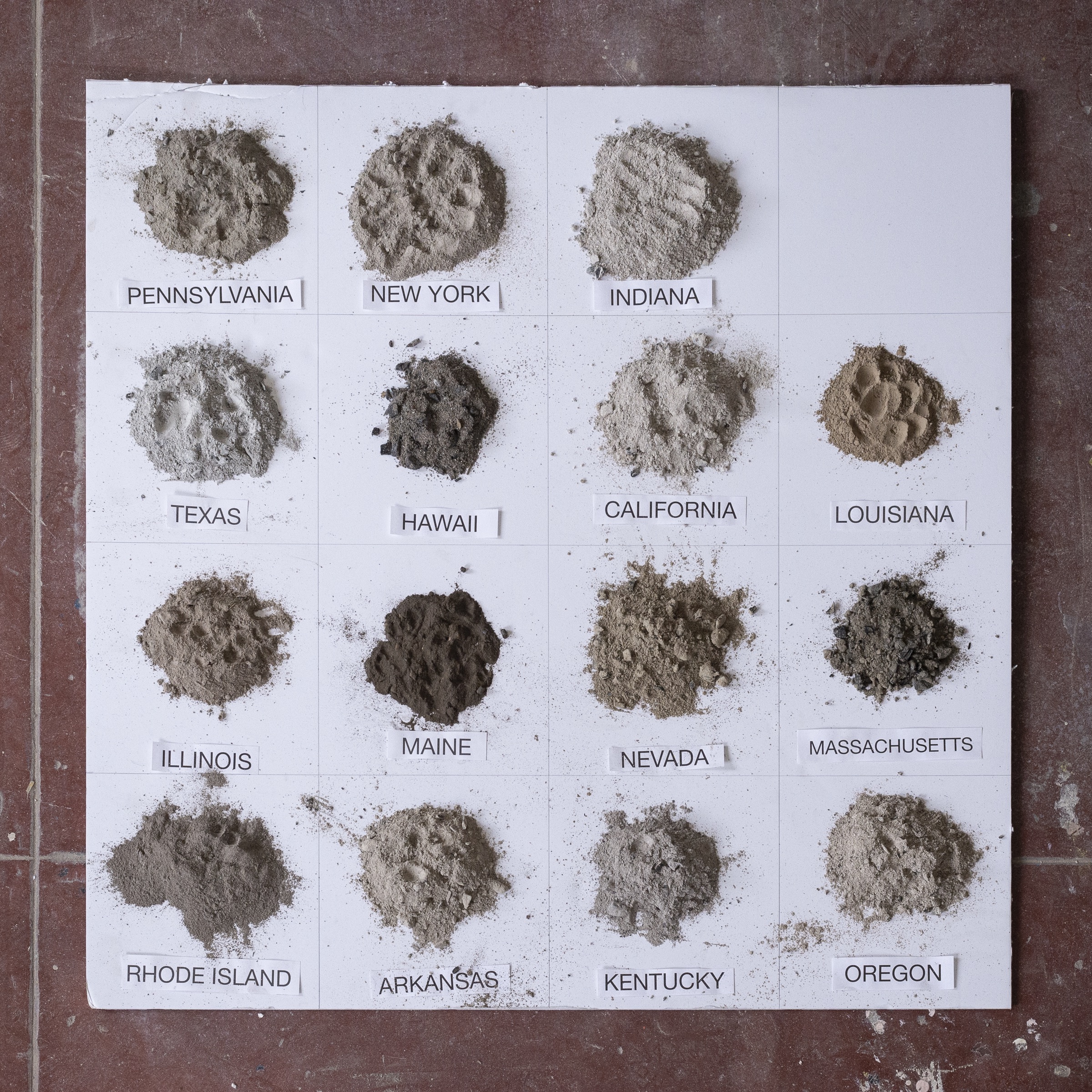
The making of Adam Silverman’s “Common Ground,” photo by Erik Benjamins.
WHITEWALL: What’s your new studio like? What have you been working on there?
ADAM SILVERMAN: I am building a very large kiln that needs to be outside. With the “Common Ground” project, but also with my work in general, I’ve been using wood ash, and it creates a lot of smoke outside the kiln, so it’s definitely not an indoor activity.
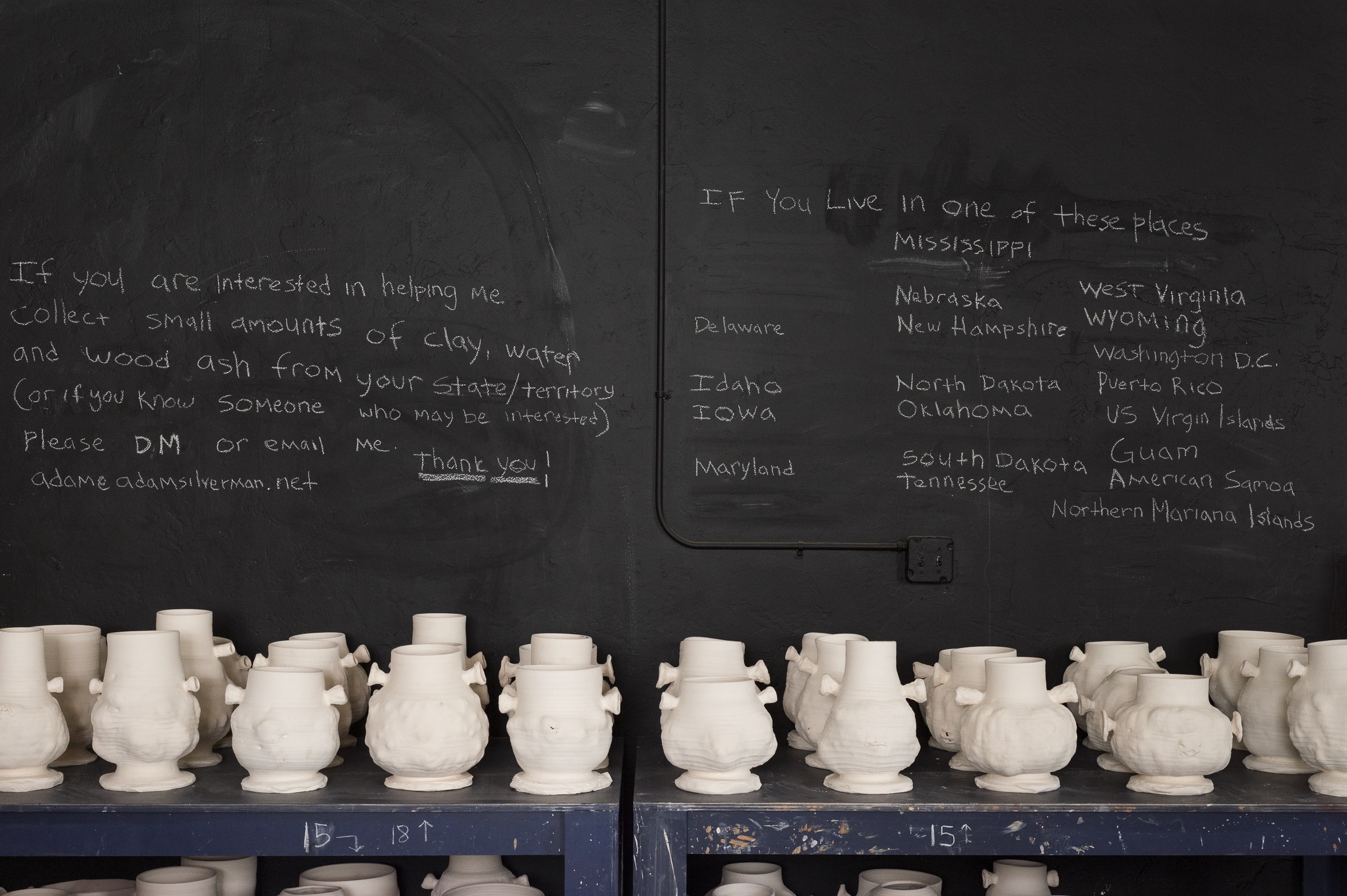
The making of Adam Silverman’s “Common Ground,” photo by Erik Benjamins.
In the meantime, I’m starting to make much larger pieces just to do some tests in the kiln before, because it’s a very volatile and unpredictable process to a certain extent, even though I’ve gotten pretty good at understanding it at a smaller scale. But to build something that’s this big is going to be a very, very different experience. It’s going to take some time.
WW: How are you incorporating wood ash into the work?
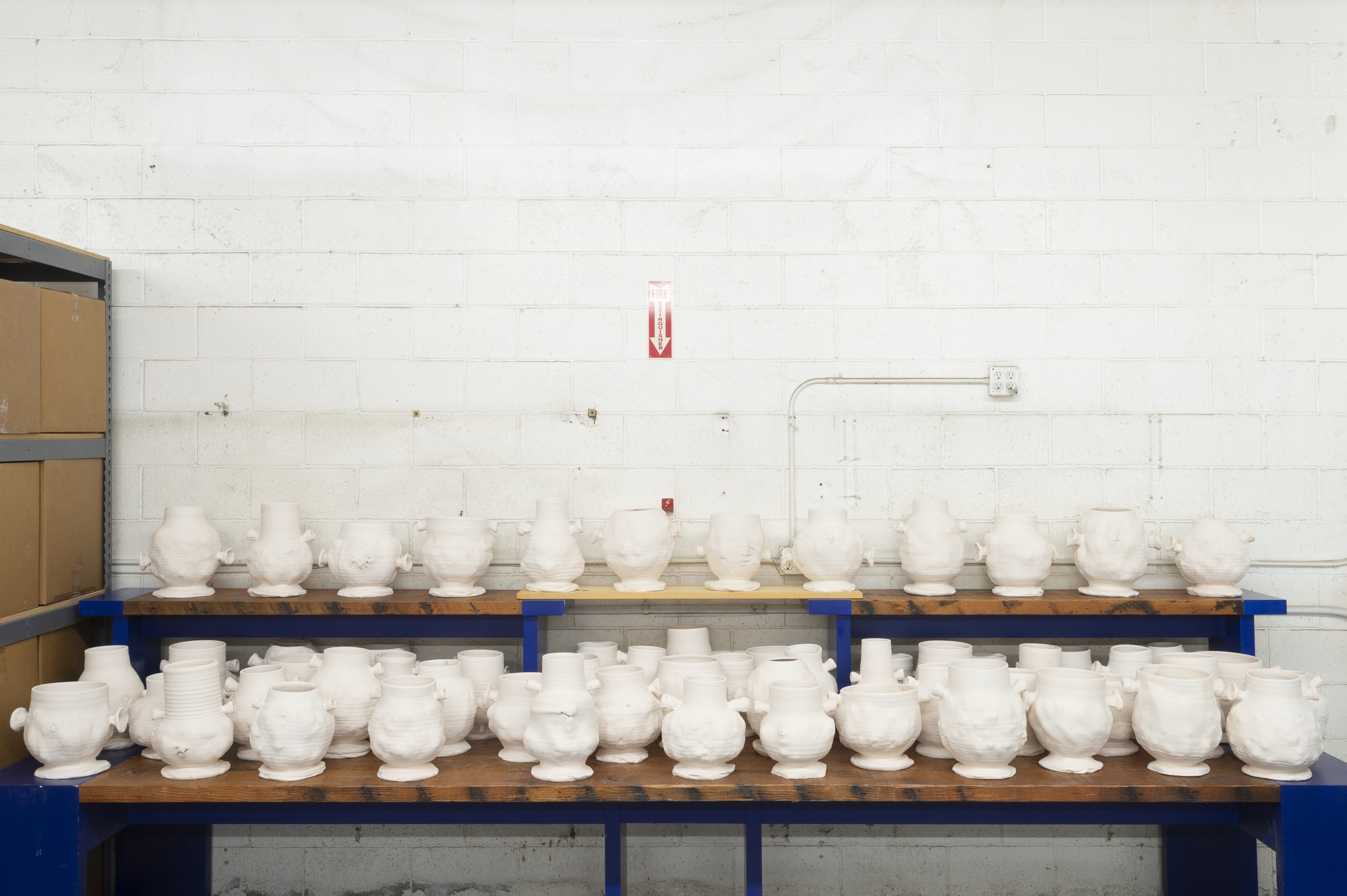
The making of Adam Silverman’s “Common Ground,” photo by Erik Benjamins.
AS: There are two different things I do with the ash. One is I use it to mix a glaze and the other one is I blow it into the kiln when it is almost at its maximum temperature. You get a lot of variation depending on where the piece is sitting in the kiln.
WW: Do you know how that will manifest in terms of color?
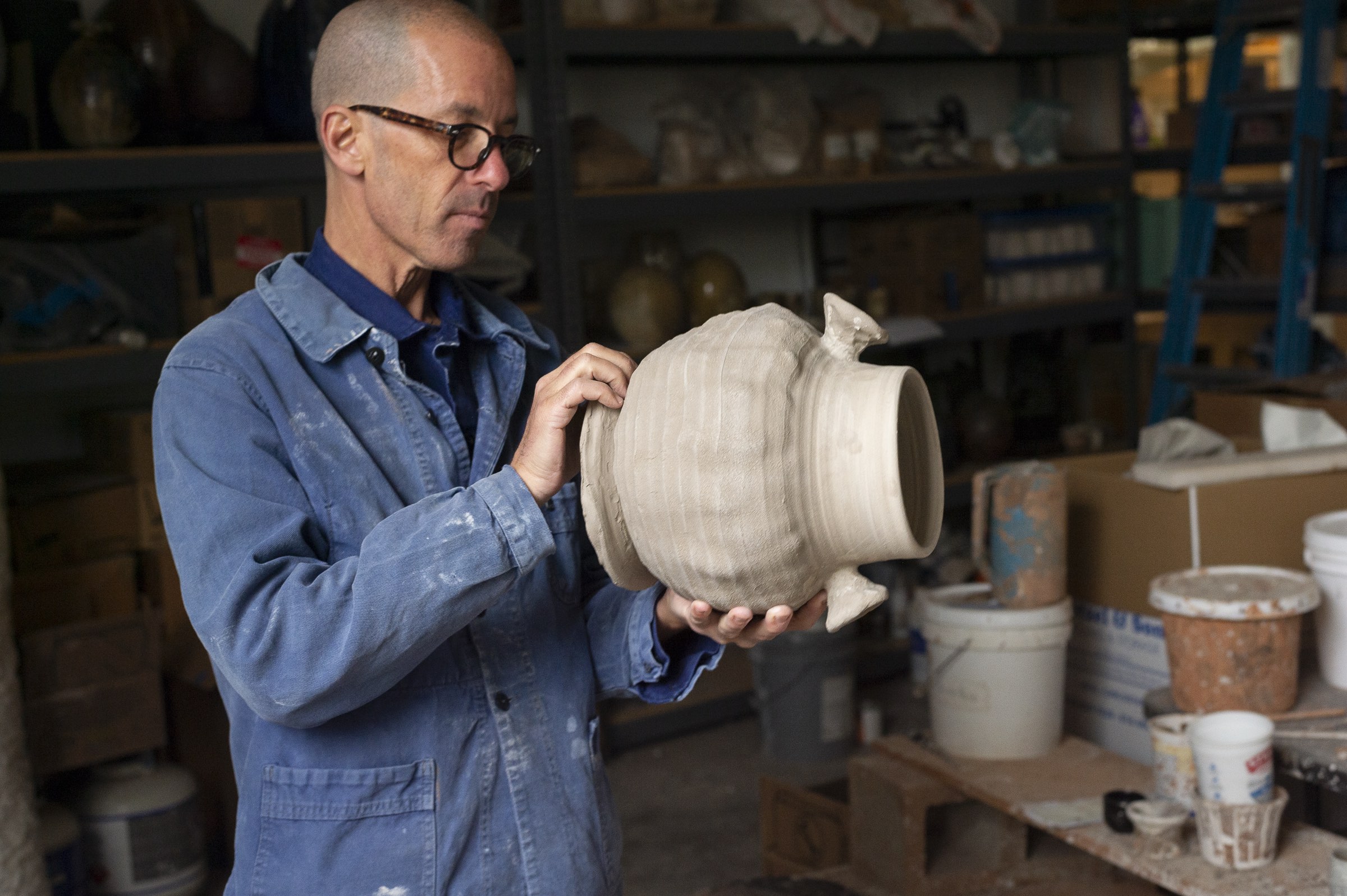
Adam Silverman, photo by Erik Benjamins.
AS: There are a lot of variations, but you’re not going to get a blue or a red. What you do get sometimes that’s really unpredictable is these kind of crystals happening on the surface.
WW: When did you start incorporating ash?
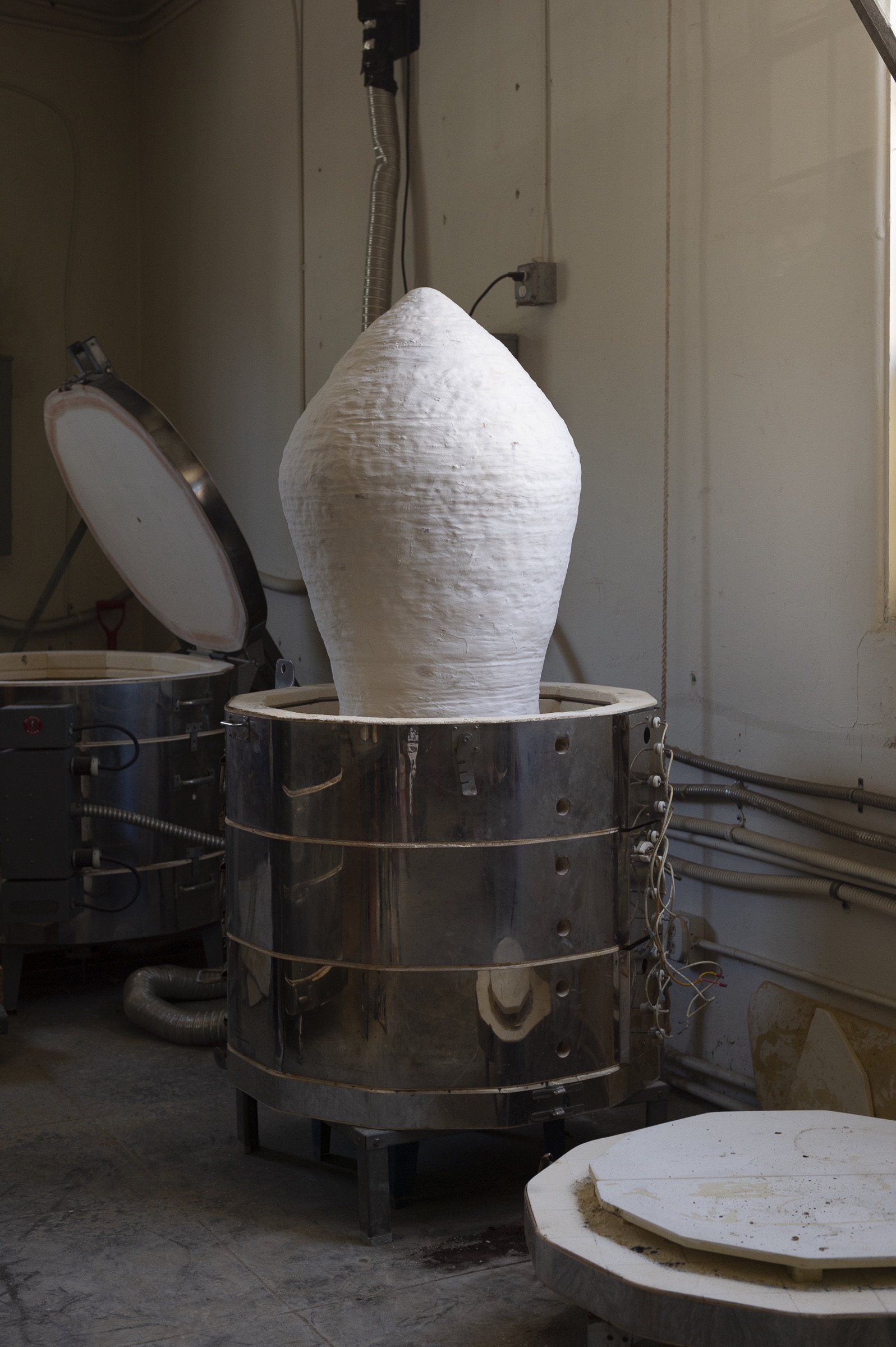
Courtesy of Adam Silverman.
AS: The first time I did a project that initiated this interest in local materials was at the Kimbell in Fort Worth in 2011. It was called “Reverse Archaeology.” The idea was that local potters, pottery villages, and towns exist because people find a good source of clay, and then a small industry springs up around it—like Ashville, North Carolina, and many other places around the world.
Kimbell was not about what was in the ground, but about the cultural institutions there, and the three architects—Louis Kahn, Renzo Piano, and Tadao Ando. Having those three architects sitting together is unprecedented, so I was trying to procure materials from the ground and buildings to make something that reflects that.
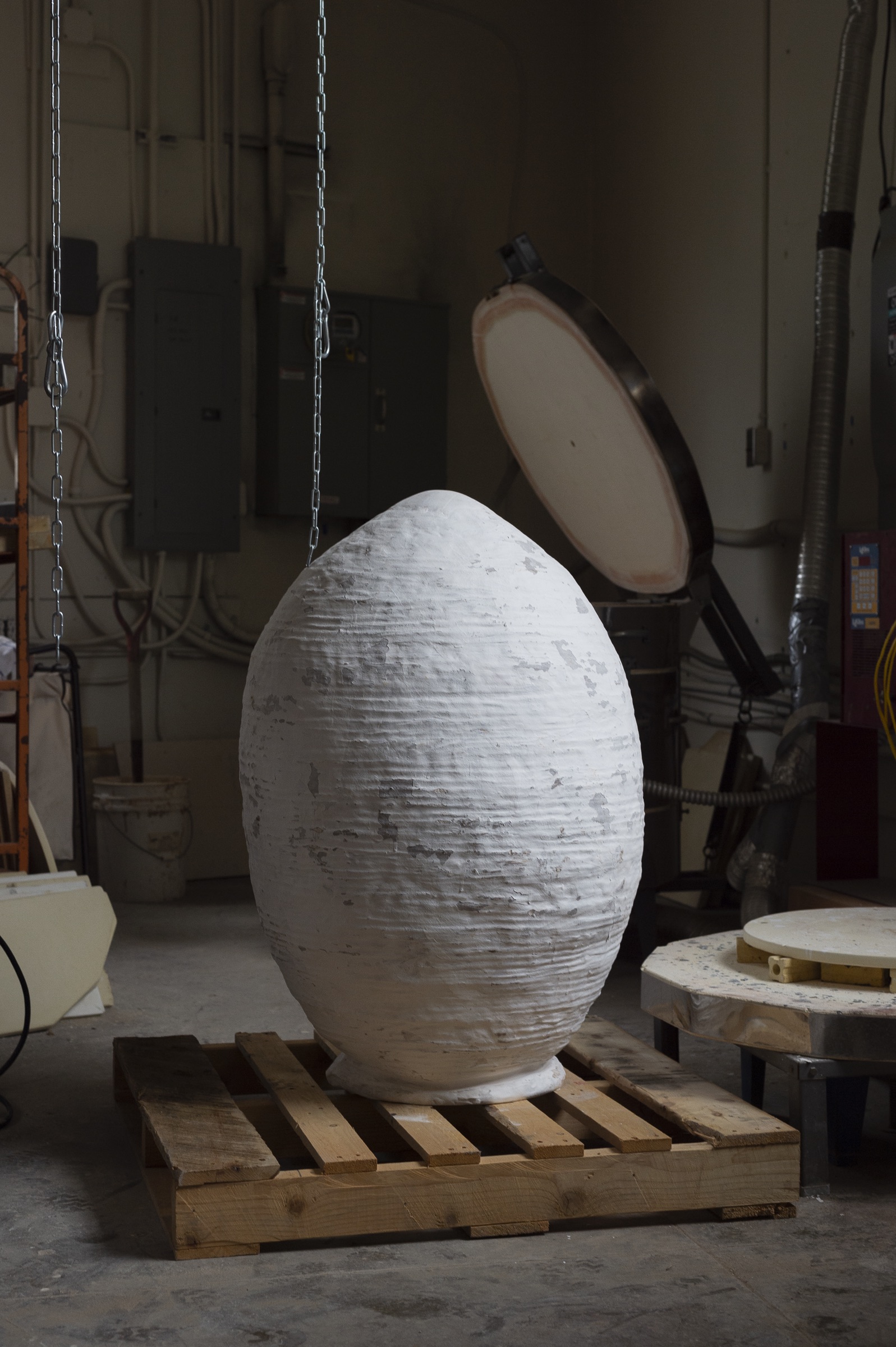
Courtesy of Adam Silverman.
I spent a year just working with the materials, trying different combinations of the clay, different temperatures, et cetera, and then using ash wood. The project was a massive education in the idea of using natural materials.
Then I started spending every summer in Rhode Island and working there for the last five or six years. I started investigating and using local materials. There is clay at the beach where we live and trees that fall down every year.
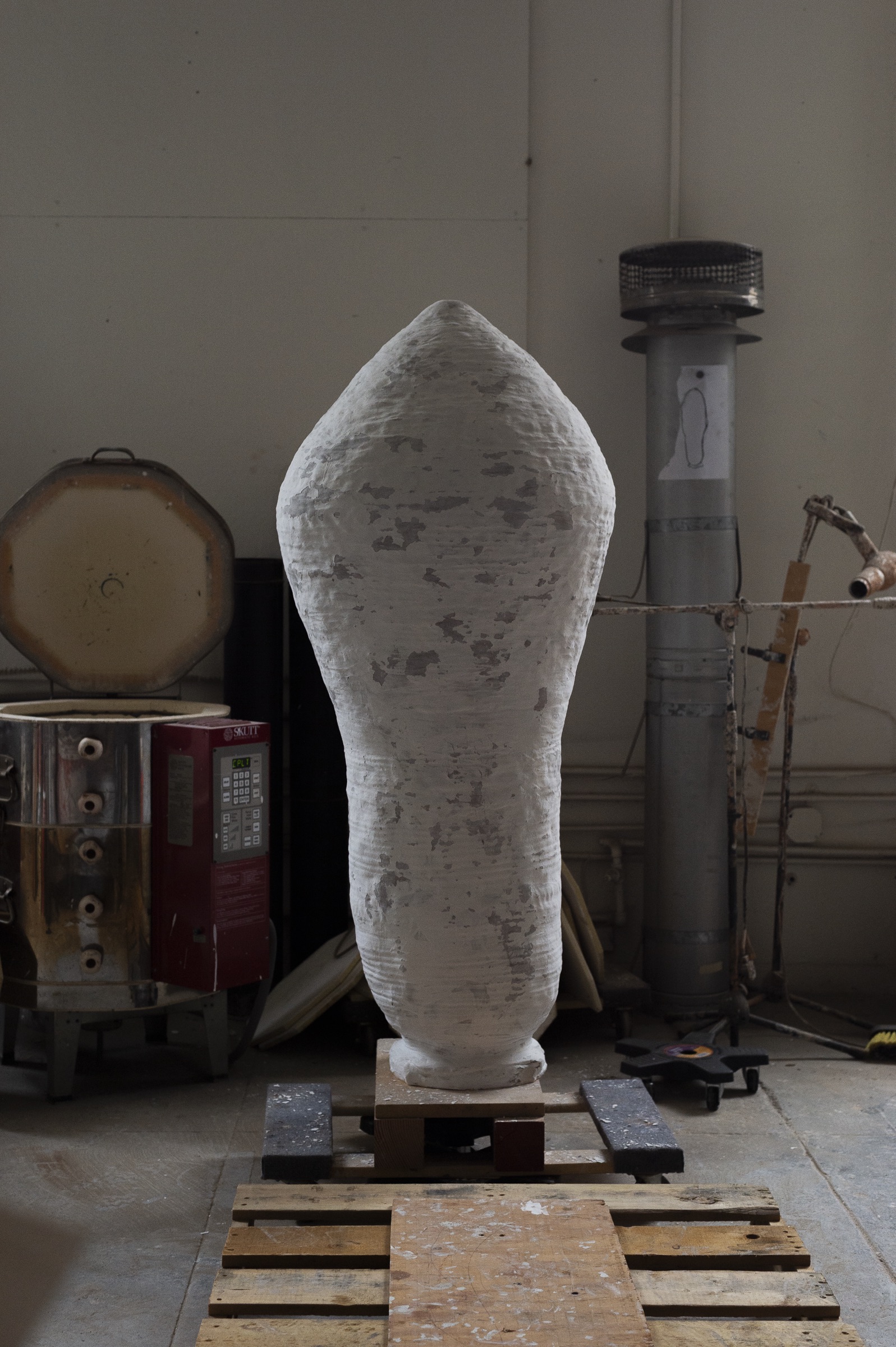
Courtesy of Adam Silverman.
One thing is that it has an actual physical effect, one is it has a philosophical or spiritual effect. I do believe you’re putting the DNA of this thing into another thing.
WW: How then did the idea for “Common Ground” come about?
AS: I was in New York last year in early September. Marc Benda took me to meet a big ceramic collector who said, “I always thought it would be interesting for someone to do a project with clay from all over the country.” I thought that was a great and ambitious idea. He was like, “Well, if you want to use it, feel free to use it.”
I left and was like, “I don’t want to use anyone else’s idea.” But over the course of the next couple months, the different pieces fell into place in my head. The political climate was getting more insane by the moment. Then I started thinking, “What if I got clay and added wood ash and water and make stuff out of it. What it be and what would be the point?”
The first thought was the dinnerware with a meal component—I would make something that I could use to help sit down at a table with people and talk to find the common ground. The phrase was hokey but undeniable.
The idea is that you put together people—not a gallery dinner with art world people—hosted at a place that would bring together all walks of life, and try to represent the people of the country. Which is simple and not subtle, but ambitious and difficult.
Then you think about what do you serve? How do you eat it? What’s the food? There are many ways to think about it.
WW: So in addition to the plates, cups, and bowls you are making, what are the objects you’re creating?
AS: I wanted to do a symbolic object, abstract ritual pot that doesn’t have any ritualistic function other than what you want to project onto it. It could be a trophy, an urn, a punch bowl, any number of things. It’s a wonky open-topped form, with a big foot and handles that are like ears or hands. It was important to be an open forum, not a closed-form if we’re going to be open-minded and listen to each other and find common ground. Those handles referencing ears are not subtle but I think important. They are intentionally roughed up, scarred, been around the block after this process forms, but standing, standing on a strong foot, and open.
WW: How will the materials from all states and territories come together?
AS: I mix them all together, obliterate political boundaries, create one body, one physical material, make these 56 things, and one version goes out to each state and territory and they live independently. In the end, the plan is we’ll have a few meals, and they could continue. I like that the dinnerware set travels around the country and that they’ve been there for these conversations. There is something that is symbolic in those dishes in the end. I like the idea that they are this record of these conversations.
It’s a very symbolic and not so subtle project, but these are not subtle times.
WW: What’s it been like to gather the materials?
AS: It’s been great. My first move was to reach out to everyone I knew personally and anybody I thought might be able to do it.
Once I ran out of gas with that, I put out the call on Instagram, and it was amazing. It was exactly what I had hoped. I got a ton of messages and enthusiasm. I haven’t gotten any of the territories, which is weirdly symbolic to me, even D.C., but I’ve gotten probably 38 of the 56 places.
Everything needs to be cleaned and sieved. The clay I pulverize, sift it, and then fire it, and then it becomes useful to mix in the clay. The common ground will be in the glaze and atmosphere in the kiln.
WW: This project was going to evolve over a period of time leading up to our national election. But now it’s happening during a national and global health crisis where most of us have been asked to stay at home. We find ourselves in a more universal situation—a common one, if you will, however uncommon—making choices for our larger community. I know that it’s been politicized, but at the human level, we’ve all had to do something to some extent for the greater population.
AS: That is true. And to go back a step, when I sent out the call, people are reaching out and collecting materials that are on the “other side of the aisle” from where I am. Even though I am overtly political, I did not politicize the project form right or left, and I think everyone can relate to it in that respect.







